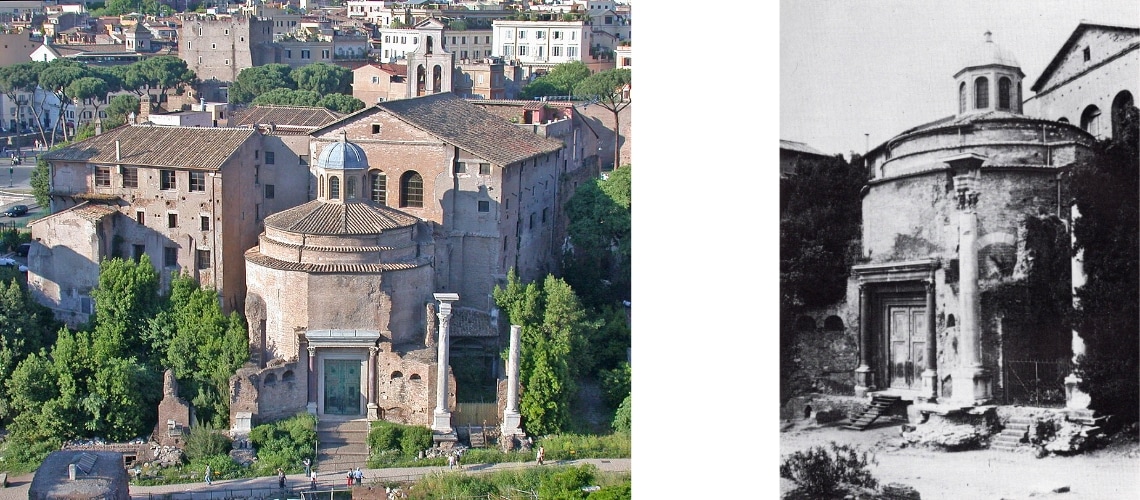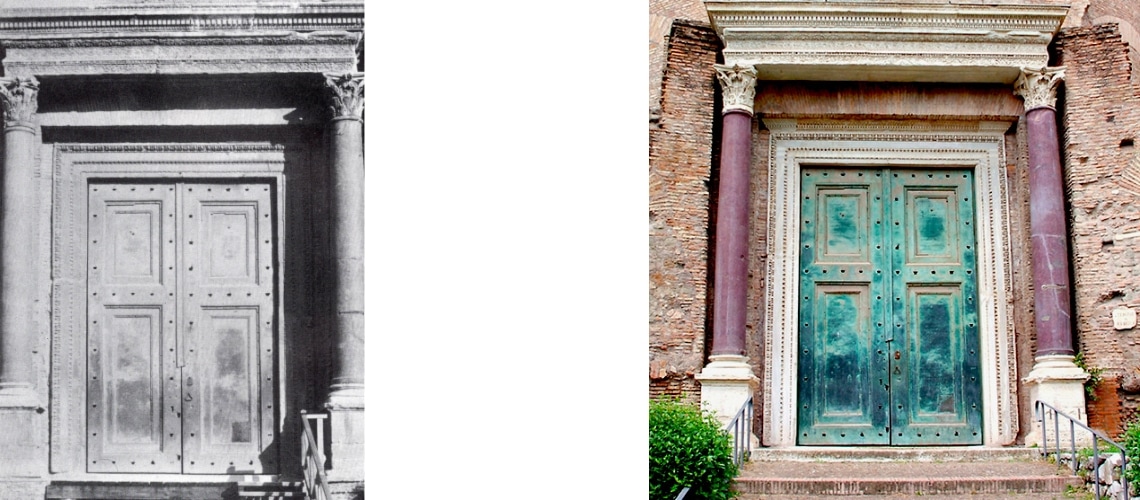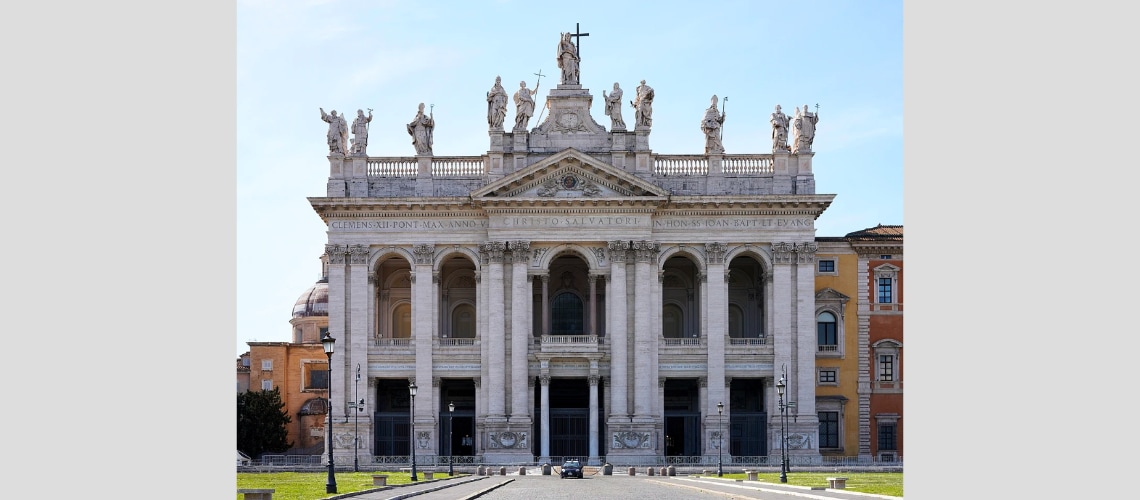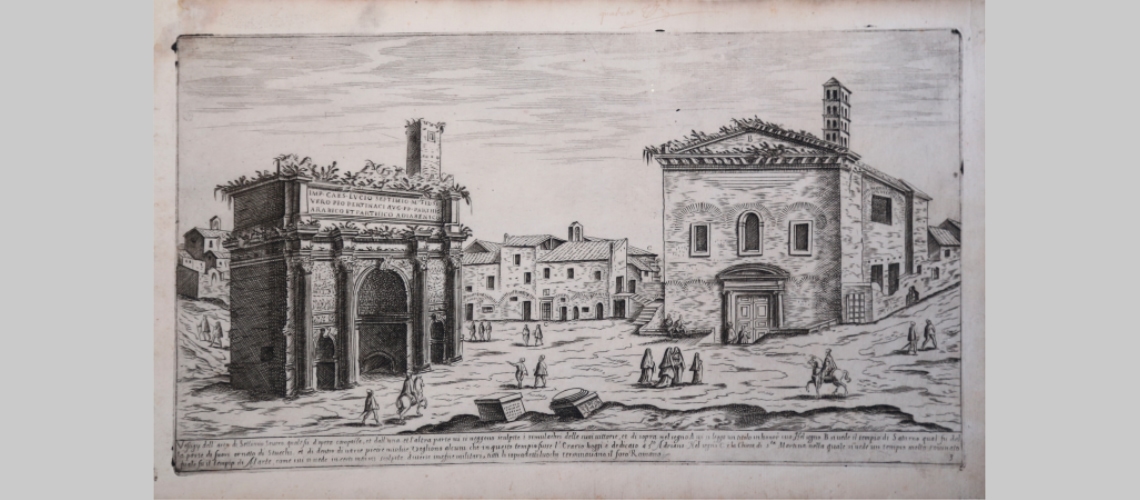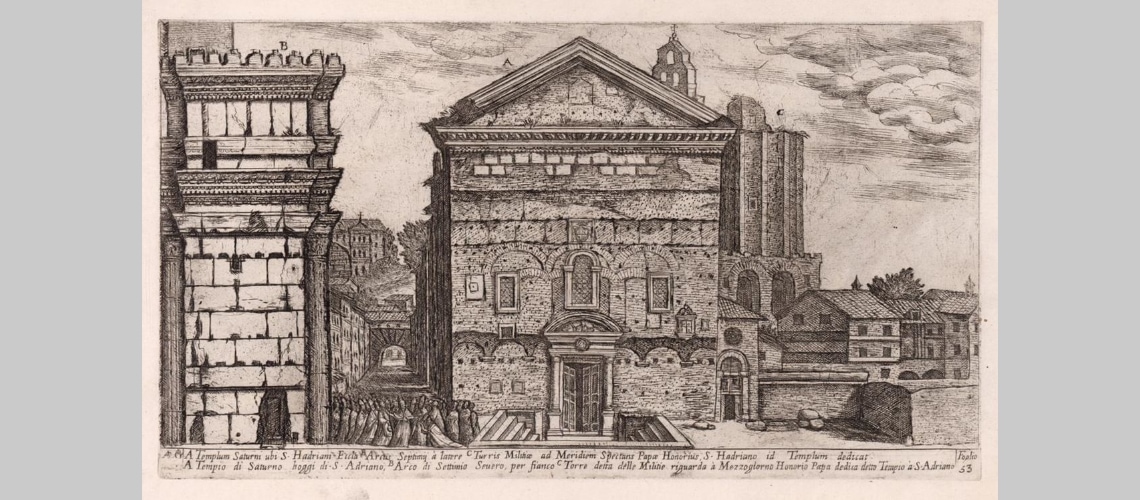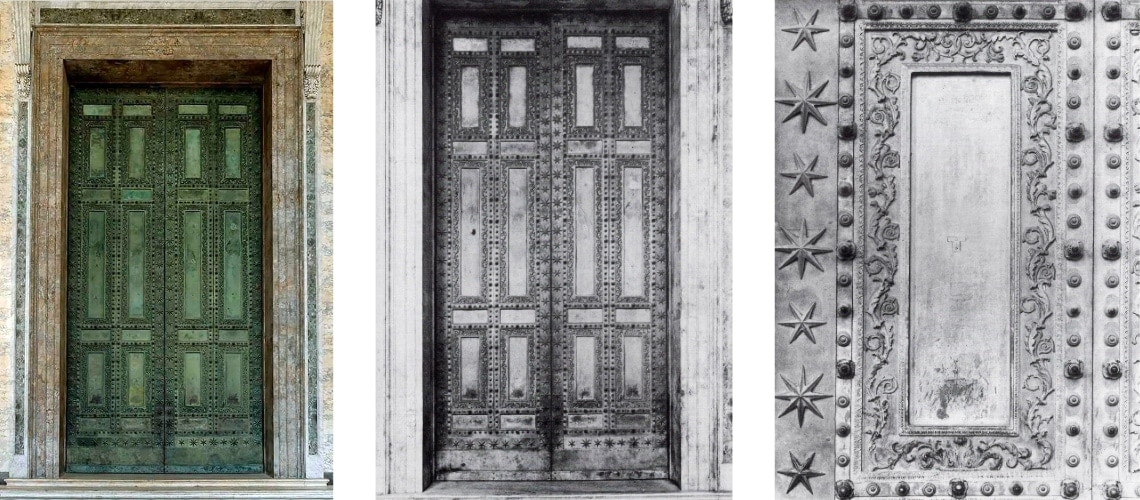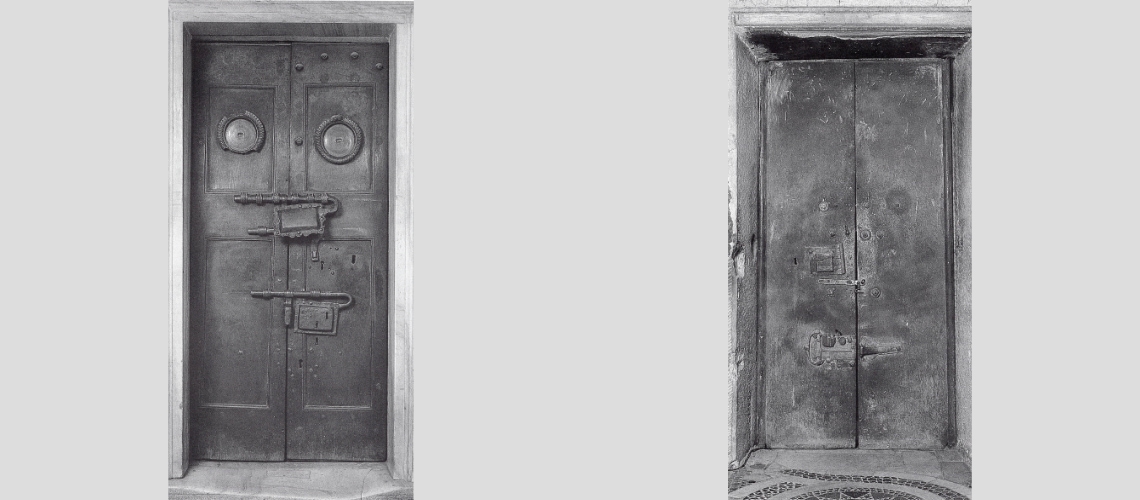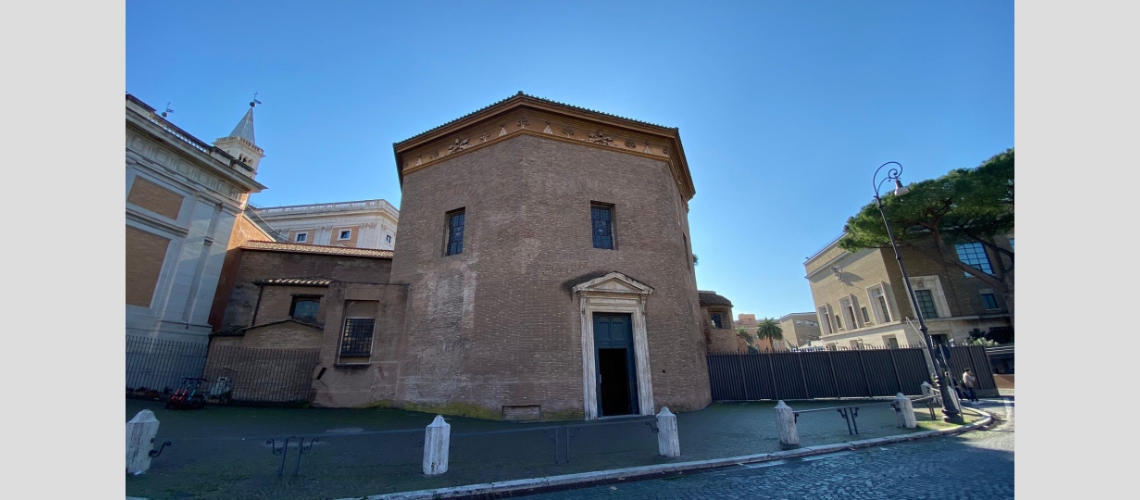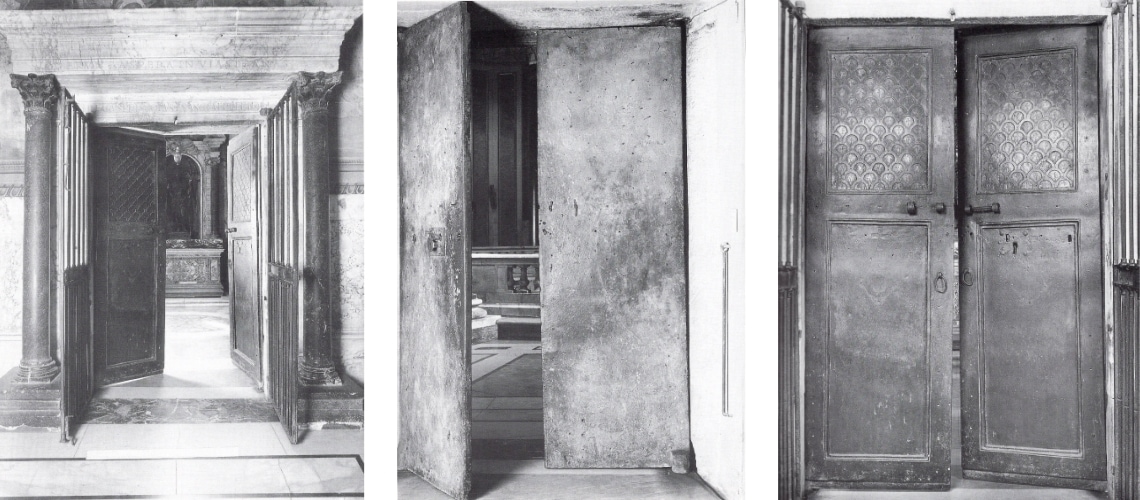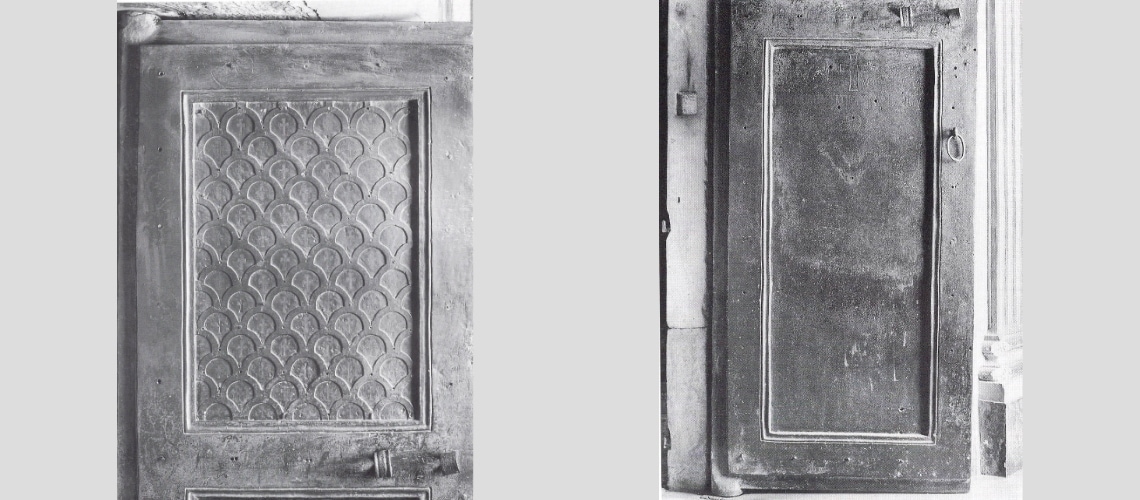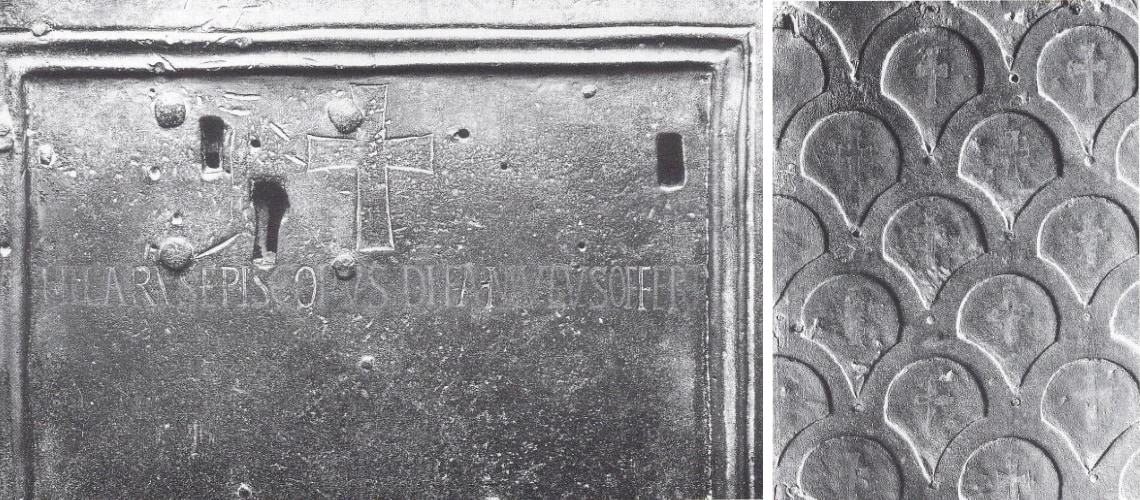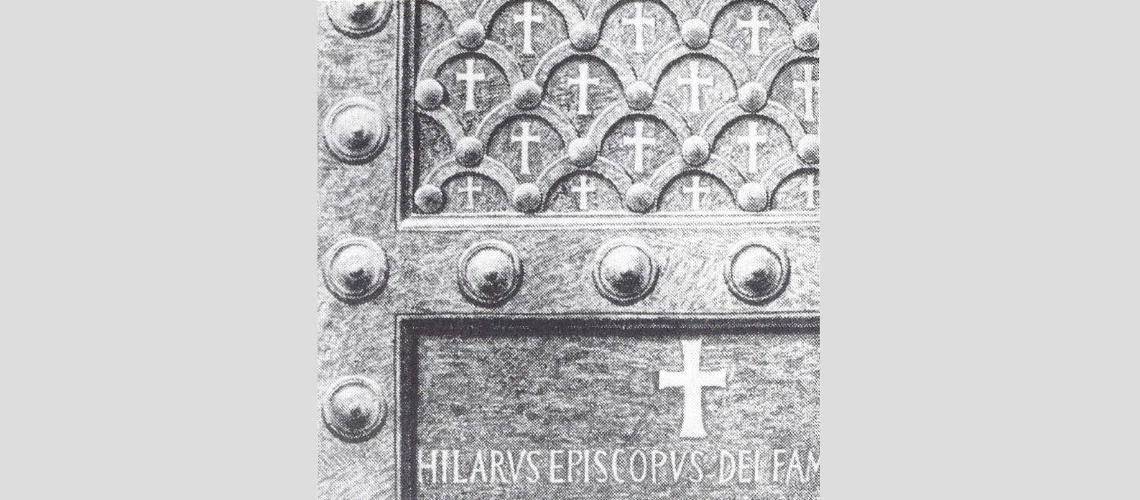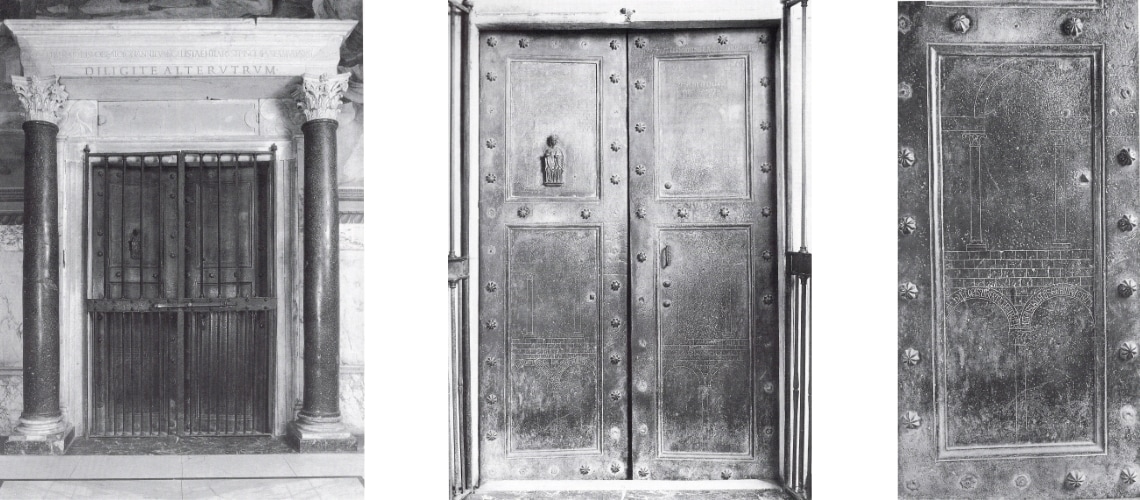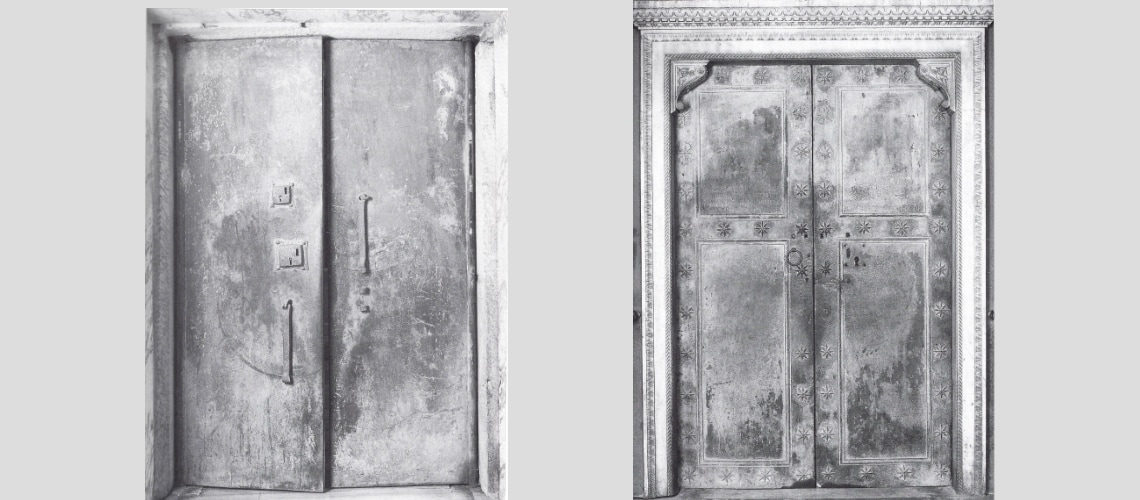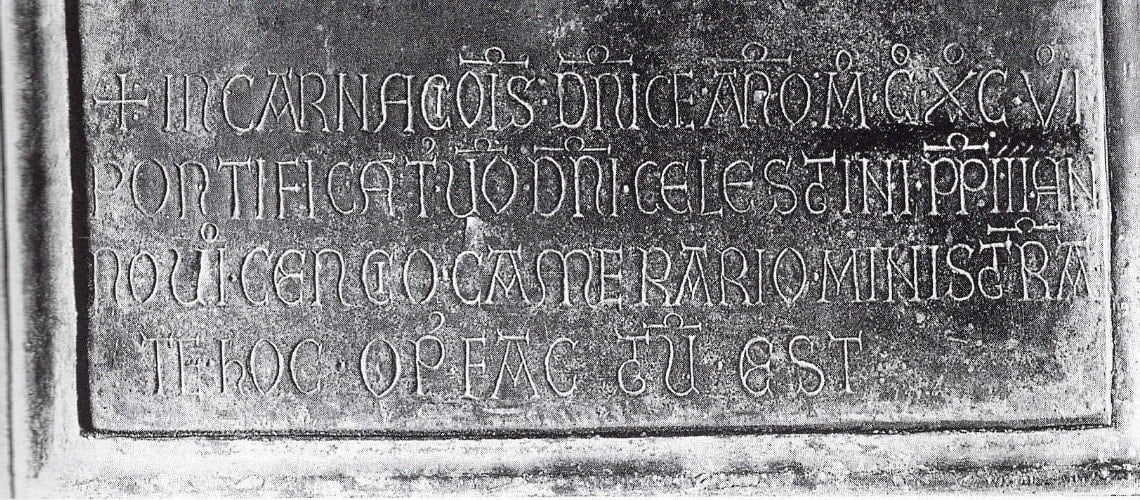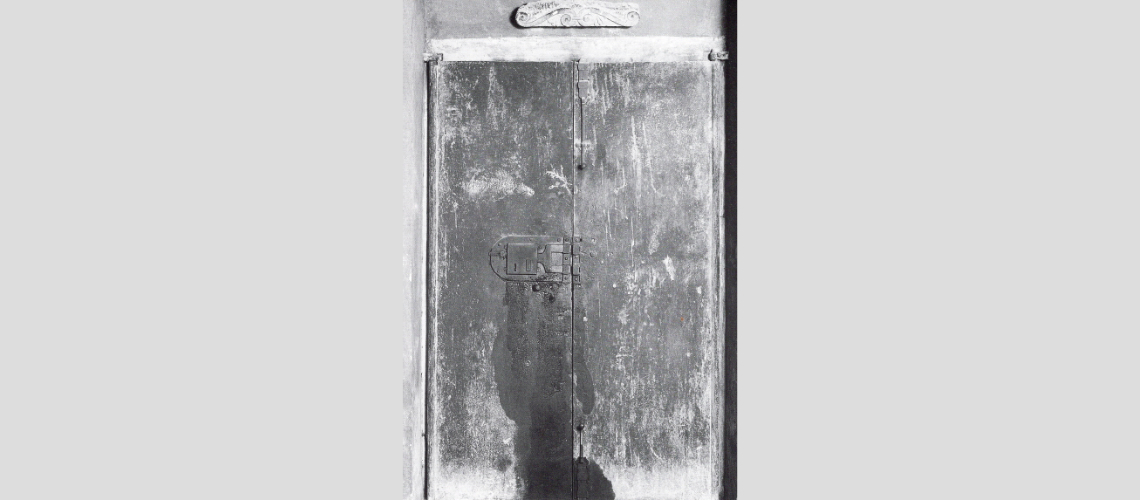The Ancient Bronze Doors in Italy
Part 2
The Door of the Temple of Romulus in the Roman Forum closed the pre-existing round monument that the emperor Maxentius in 309 AD transformed into the temple of his son Valerius Romulus, and is contemporary (Photo 1,2). It consists of two doors completely cast in bronze, 4.92 meters high and 3.16 meters wide, and was decorated with bronze studs, now lost. (Photo 3,4)
The uprights of the frame are made of two whole bronze plates (external and internal) joined with dovetail joints; the central panels are single solid plates 5 mm thick.
| 1-Roman Forum, Temple of the Divine Romulus | 2-Roman Forum, Temple of the Divine Romulus |
| 3-Gate of the Temple of Divine Romulus | 4-Gate of the Temple of Divine Romulus |
The door came from the Cura Iulia, the ancient seat of the Roman Senate, built by Octavian in 29 BC, which Pope Honorius transformed into a church in 630 with the name of Sant’ Adriano al Foro; it was transported by Pope Alexander VII Chigi and adapted by Borromini to place it at the entrance to the Basilica of St. John Lateran (Photo 5).
There are various drawings of the door when it was still in the church of Sant’ Adriano al Foro: by Giuiano da Sangallo from the end of the 15th century, by Antonio Labacco from 1528, by Etienne Duperac from 1575, by Aloisio Giovannoli from 1615 (Photos 6,7,8,9,10).
5-Basilica of St. John Lateran, facade
| 6-Giuliano da Sangallo, drawing of the bronze door of St. Hadrian in the Forum, late 15th century, Vatican Apostolic Biblical Library | 7-Francesco Borromini, drawing of the door of St. Hadrian at the Forum | 8-Antonio Labacco, drawing of the bronze door of S. Adriano al Foro, 1528 |
9-Etienne Duperac, S. Adriano al Foro, 1575.
10-Aloisio Giovannoli, S. Adriano al Foro, 1615
From the Diary of Pope Alexander VII we know that “on May 27, 1656, the doors for the new building were removed” and, the pope continues, “the door that was St. Adrian’s should be given to Father and Virgilio Spada [intermediary between the pope and Borromini] who should have it repaired by Cav. and Borromino with more bronze or at least copper”. The door therefore underwent various adjustments in size and decoration by Borromini compared to the Roman original, and for the reassembly with different sizes, a wooden core was created to which the sheets were attached (Photos 11,12,13).
| 11-St. John Lateran, Roman bronze door modified by Borromini | 12-St. John Lateran, Roman bronze door modified by Borromini | 13-St. John Lateran, Roman bronze door modified by Borromini, detail |
Another bronze door of ancient Roman origin reused in the Basilica of St. John Lateran is the one, of which little is known, of the oratory of the Chapel called Sancta Sanctorum (Photo 14): Onofrio Panvino in “De praecipuis urbis Romae sanctioribusque basiicis, quas Septem ecclesias vulgo vocant” of 1570, tells us that the Oratory dedicated to St. Lawrence had bronze valves of admirable workmanship, and he tells us this a few years before the renovation carried out between 1586 and 1589 on the Lateran complex by Pope Sixtus V; this renovation did not alter the appearance of the oratory and therefore we can say that the door has remained as it was in ancient times.
14-St. John Lateran, Chapel of St. Lawrence called Sancta Sanctorum
It consists of two doors made of solid bronze plates with 3.4 cm thick uprights and 7 mm thick panels; it is 2.42 metres high and 1.15 metres wide at the bottom while it is 1.10 metres wide at the top. The bolts indicate a reuse in the medieval period probably during the works of Innocent III (1198-1216) (Photo 15,16).
| 15-St. John Lateran, Door (recto) of the Chapel of St. Lawrence called Sancta Sanctorum. | 16-St. John Lateran, Door (back) of the Chapel of St. Lawrence called Sancta Sanctorum. |
Another late antique Roman door is that of the oratory of St. John the Baptist in the Lateran Baptistery, built in the early 300s AD by Constantine I (Photo 17). After the sacking by the Visigoths of Alaric in 410 and then by the Vandals of Genseric in 455, Pope Hilary donated many furnishings to the oratory between 461 and 468; this is the only remaining door and therefore dates back to those dates and is still inserted in the marble frame from the time of Pope Hilary; the two solid bronze doors measure 255 x 84 centimeters each and are divided into rectangular panels with molded profiles, without the cold-applied decorations originally present on the frames such as the studs, of which clear traces remain.
17-Lateran Baptistery
The two upper panels have a scaled panel (used in Rome since the 1st century) with raised arches, inside which there is a small silver cross in inlaid work. A dedicatory inscription in inlaid work to Pope Hilary is present on the smooth mirror of both doors. (Photos 18,19,20,21,22,23,24,25)
| 18-Entrance to the Lateran Baptistery Oratory of San Giovanni Battista | 19-Lateran Baptistery Oratory of St. John the Baptist, bronze door of Pope Hilary, 461-468, back | 20-Lateran Baptistery Oratory of St. John the Baptist, bronze door of Pope Hilary, 461-468, front |
| 21-Lateran Baptistery Oratory of St. John the Baptist, bronze door of Pope Hilary, 461-468, left door, upper mirror | 22-Lateran Baptistery Oratory of St. John the Baptist, bronze door of Pope Hilary, 461-468, left door, lower mirror |
| 23-Lateran Baptistery Oratory of St. John the Baptist, bronze door of Pope Hilary, 461-468, left door, lower mirror, detail | 24-Lateran Baptistery Oratory of St. John the Baptist, bronze door of Pope Hilary, 461-468, upper mirror, detail |
25-Lateran Baptistery Oratory of St. John the Baptist, reconstruction of detail of the bronze door of Pope Hilary, 461-468
If the marble entrance frame to the oratory of St. John the Evangelist of the Lateran Baptistery from the time of Pope Hilary, identical to that of the oratory of St. John the Baptist, has remained original, the bronze door from 461-468 that housed it has been lost. In its place there is the medieval bronze door dated 1195 commissioned by Pope Celestine III and made by Cardinal Cencio Savelli, the future Pope Honorius III. Its authors left their signature inside the arches engraved at the bottom left of the left door: Pietro and Uberto da Piacenza, also creators of the similar door, made in 1196, today located in the cloister of the Lateran Basilica at the passage to the sacristy. On the upper mirror of the left door of this last door appears the inscription with the date and the name of Pope Celestine III. (Photos 26,27,28,29,30,31,32)
| 26-Entrance to the Lateran Baptistery Oratory of San Giovanni Evangelista | 27-Lateran Baptistery Oratory of St. John the Baptist, bronze door of the oratory of St. John the Evangelist, 1195 | 28-Lateran Baptistery Oratory of St. John the Baptist, bronze door of the oratory of St. John the Evangelist, 1195, detail of the left door |
| 29-Lateran Baptistery Oratory of St. John the Baptist, back of the bronze door of the oratory of St. John the Evangelist | 30-Lateran Baptistery Oratory of San Giovanni Battista, bronze door of the passage to the sacristy, 1195 |
31-Lateran Baptistery Oratory of San Giovanni Battista, bronze door of the passage to the sacristy, upper panel of the left door
32-Lateran Baptistery Oratory of San Giovanni Battista, back of the bronze door of the passage to the sacristy

